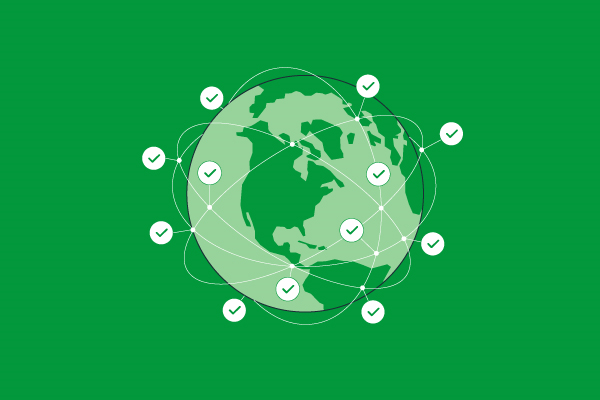It is likely that most of your customers are online, wherever they may be in the world. Increasingly, people are shopping online for items they would have traditionally bought in stores, like furniture, fashion, and fast food. Online shopping is popular all over the world. Since so many people store card information online and make payments online, fraudsters can’t resist taking advantage, and online payment fraud is on the rise.
Payment fraud is a term every online business owner dreads. Not only can it be costly, but it can also affect your credibility and customers’ trust in your store. A transaction that is fraudulent or illegal on the internet is described as a payment fraud. One of the most common scenarios involves cybercriminals stealing money, personal property, or sensitive information from someone.
What impact can it have on your business?
Online stores are becoming more popular, which means the amount of fraudulent activity is increasing, and cybercriminals are becoming more creative. Fraudsters use the dark web actively for committing fraud online in a variety of ways. Information about fraud and tools criminals use are difficult to trace on the dark web. As well as selling IDs and compromised cards, they also share sensitive data on the dark web. Also, fraudsters may try to obtain sensitive information by tricking credit card holders. Phishing is the practice of sending a fake email or SMS message to users in order to steal sensitive information. Cardholders can also be redirected to fraudulent websites to obtain private information. When a patch or glitch isn’t updated for a while, cyber thieves can access sensitive data easily.
Payment Fraud Risk
An important type of payment fraud is Advanced Persistent Threat (APT), in which hackers gain unauthorized access to computer networks and steal data. According to the European Payments Council (EPC), APTs are often state-sponsored and pose a high risk to all payment ecosystems, not just payment infrastructures. DDoS (Distributed Denial of Service) is an online payment fraud where criminals disrupt services by making machines or networks unavailable to users, often through botnets (hacker-controlled computer networks). There are still many (D)DoS attacks, and the EPC warns financial services are being targeted in a systematic manner.
Understanding the differences between good and bad transactions and calibrating automated fraud detection solutions to capture relevant information are significant challenges in payment fraud. Fraudsters are becoming more sophisticated and are increasingly cautious about covering any gaps in a typical customer profile, even when some deviations are obvious – shipping addresses too far away from IP addresses, for example. As a result, firms must be vigilant in checking for discrepancies and conduct due diligence.


How Does Payment Fraud Take Place?
Risks associated with payment fraud include:
- Phishing: An example of phishing is using urgent or threatening language, requesting sensitive information, sending attachments that are suspicious, unprofessional design, URLs/email addresses that do not match, not addressing the victim by name.
- Identity Theft: An unexplained charge or withdrawal, altered or forged documents provided for identification, suspicious or inconsistent information provided, exceeding credit limits are all signs of identity theft.
- Malware: Software that suddenly demands updates; an alert that informs a device is full of viruses, and an offer to scan the device suddenly appears on the screen.
- Payment card fraud: Large orders, purchases of multiple quantities of the same item, unusual cross-border transactions, large cash advances, or purchases of luxury goods.
- APT: Spear-phishing emails targeted at specific people, strange logins, information moved around, widespread backdoor trojan, exportable data collected.
- (D)Dos attacks: Slow access to files, spam emails, trouble accessing websites, internet disconnected.
Risk Management in Payments
Your bottom line can be protected with effective anti-fraud prevention tools. It is imperative that you have in place a robust fraud management strategy. In addition, you can spot some warning signs so that your risk of being hacked is minimized. Detecting fraud requires a comprehensive approach to analyzing data, so you need a mix of fraud prevention tools and knowledge of fraud trends. In addition, make sure your payment processors provide a variety of tools for collecting data and analyzing it, so that you can run your online business more efficiently.
As for payments specifically, here are some measures you can take for effective risk management:
- Checking social media: By checking the cardholder’s details on social media, we can check whether the cardholder’s details match those on their online profiles. A profile picture, full name, bio, etc., can be extracted using this method.
- IP Analysis: Apart from geolocation, you can also check if your user is using VPNs, proxy servers, or emulators to hide their connection.
- Email Address Analysis: Even a single data point, such as an email address or phone number, can reveal a lot of information. Do you know if it was created from a suspicious domain (a free or disposable address)? What was the difficulty of the authentication process? Are there any data breaches involving it?
- Phone Number Check: In the same way, a phone number can be checked against records to get a better idea of who you’re dealing with. What type of phone is it? Is it a landline or a mobile? Does the carrier’s location have a close proximity to the shipping address? Does your user rely on disposable numbers?
As a result of these extra data points, you will be able to connect the user with the credit card information, allowing you to make an intelligent decision when accepting or rejecting a purchase request.


How Ecommerce Businesses Can Mitigate Fraud
Technical and regulatory controls can help e-commerce businesses defend themselves against fraudulent activity. Keeping themselves and their customers safe from fraud is crucial for organizations conducting online transactions. You will be able to increase your company’s online presence with strong security practices, giving your customers and stakeholders more confidence in your abilities. It can be beneficial to your reputation to educate customers about how you are protecting their private or financial data with an FAQ page. Consumers can be protected from fraudulent activity by implementing the following security controls on e-commerce websites:
Multi-factor Authentication & Strong Passwords
All user accounts on your e-commerce website should have Multi-Factor Authentication enabled (and preferably enforced). The use of adaptive authentication is also important – it creates a risk profile for each user and requires extra authentication for those with high risk profiles attempting to access highly privileged systems or data. As a result, your users will be less likely to fall victim to account takeover fraud and other social engineering attacks.
CAPTCHA
If you use CAPTCHA on your e-commerce site for user signups, password resets, and even purchases, you will prevent attackers from conducting BIN attacks or credit card testing. You can prevent bots and automated software from repeatedly trying to make transactions on your website using fraudulent credit card details by using CAPTCHA. Additionally, it helps prevent the creation of new fake accounts or the resetting of passwords by automated scripts by an attacker.
Employee Training
It is always a good investment to train your employees how to recognize and detect fraudulent activity on your e-commerce platform. Software and tools can’t stop all e-commerce fraud attempts, so it’s important for your employees to be trained in identifying and responding to different types of fraud. Make sure your team is equipped with the skills and knowledge they need in order to protect your business from fraud and scammers.
CVV
The Card Verification Value (CVV/CVC) is a security code typically found on the back of a credit card that can be used to verify online transactions as legitimate. For a purchase to be successful, an attacker will need the CVV number in addition to the credit card number and expiration date. Due to the Payment Card Industry Data Security Standard (PCI DSS) prohibiting companies from storing users’ CVV data (which will be discussed later in the article), CVVs are much harder to obtain. Unlike credit card numbers or expiration dates, CVVs can’t be exposed in a data breach. In addition, CVVs cannot be stolen from skimming devices since they are not stored on the magnetic strip of credit cards.
PCI DSS Compliance
PCI DSS (Payment Card Industry Data Security Standards) is a compliance framework for protecting credit card data and cardholder information. Secure online transactions require organizations handling credit card information to implement specific business processes and security controls. Maintaining PCI DSS compliance is essential if your company handles credit card information. Otherwise, you could face significant fines. Your company should also ensure that any third-party vendors you use for payment processing are PCI DSS compliant and properly secure data at rest and in transit.
IP Geolocation Tools
Using IP geolocation software, this type of anti-fraud system determines where the user is geographically located before completing an order. Once the geolocation software has obtained the customer’s billing and shipping addresses, it will compare these with the geolocation results. The system can flag and prevent fraudulent transactions from being processed if it determines that they are fraudulent. Identity theft and triangulation fraud are protected with anti-fraud geolocation software.
Mitigate Risk with Oceanpayment Risk Management Service
Aside from our integrated 3DS 2.0 solutions, we also decrease your payment risk through our embedded AI-based system. The risk control system uses advanced big data processing to allow merchants to create fraud blacklists and have high-risk order alerts to maximize revenue. Our chargeback avoidance also allows merchants to streamline processing and prevent over 99% of transaction risks.












Comments are closed.